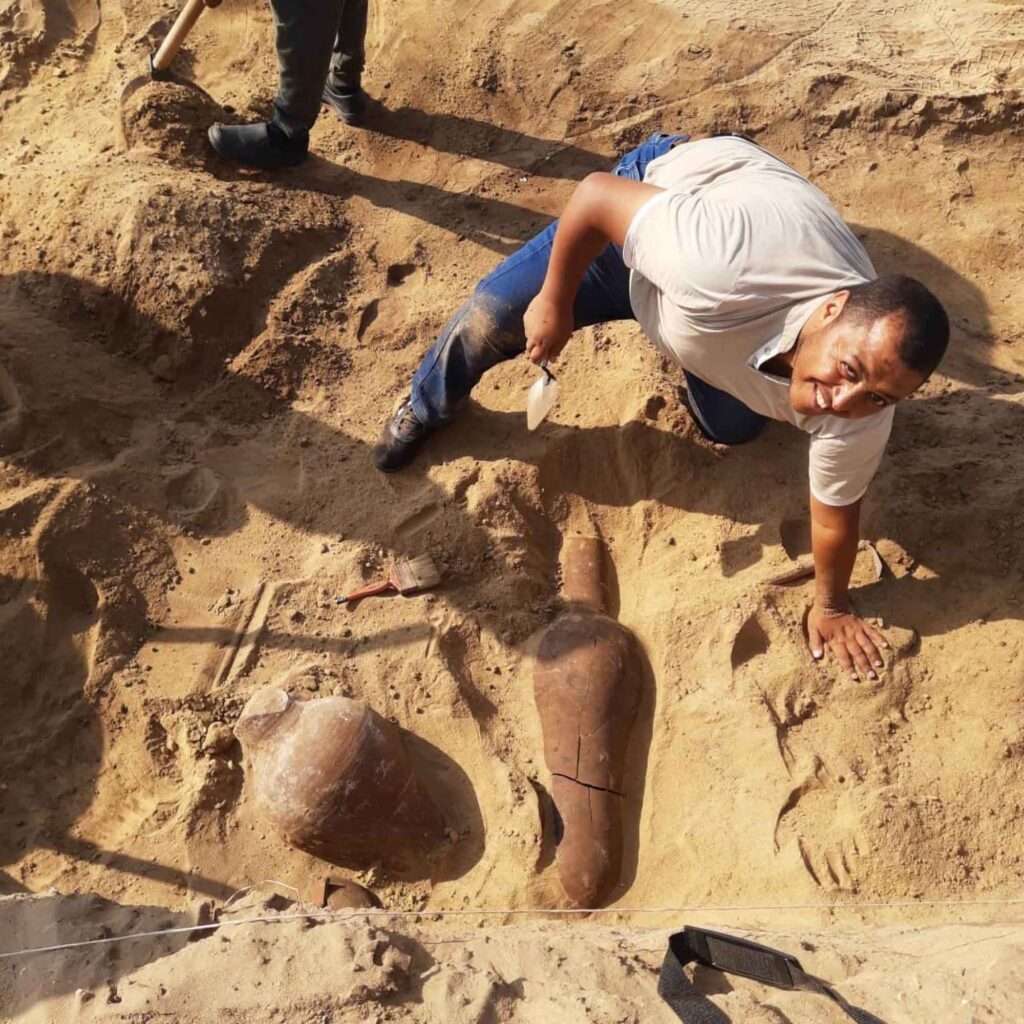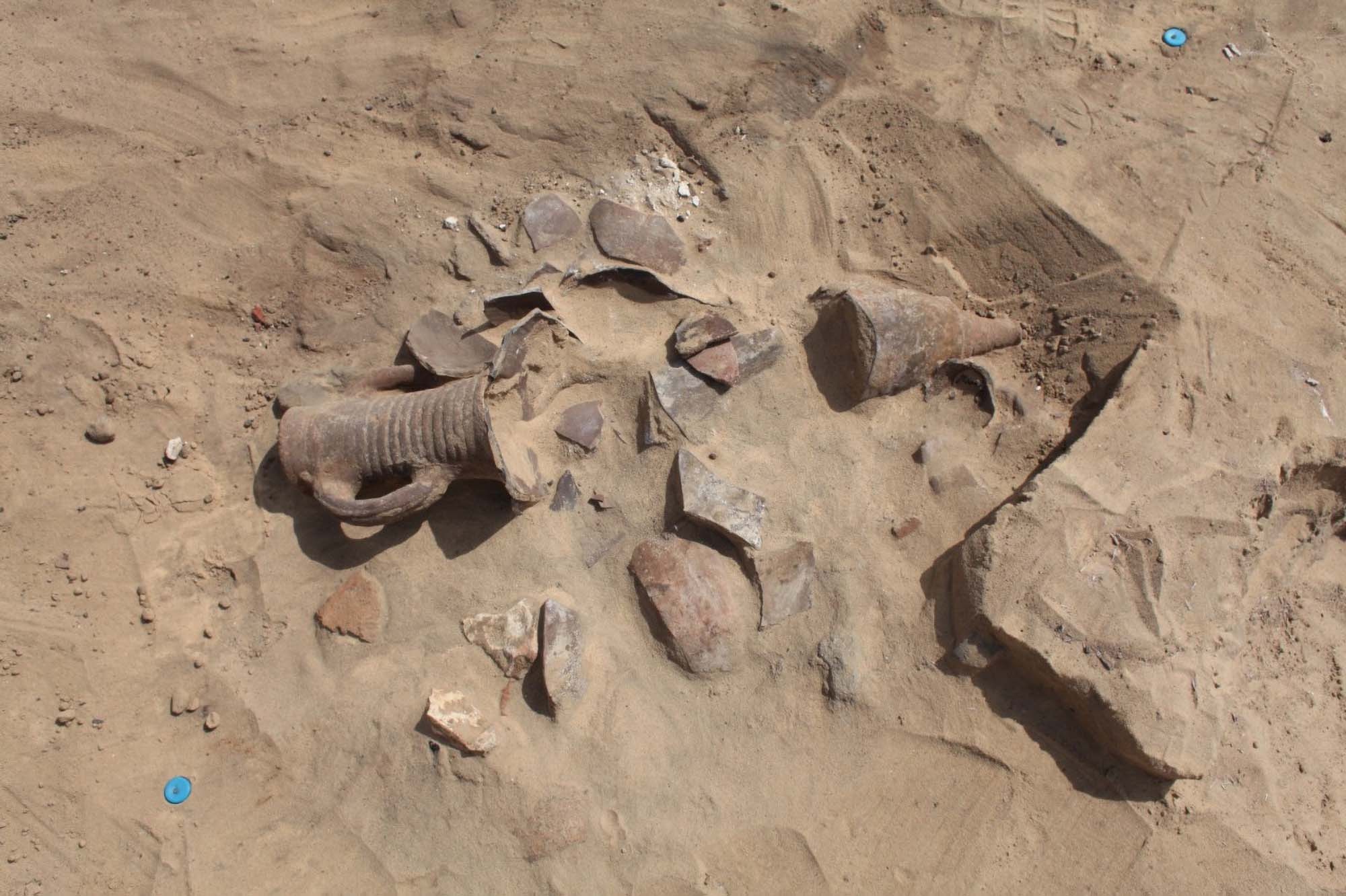These are the incredible Graeco-Roman ceramics and amphorae unearthed at an archaeological site in Egypt.
The find was made by a joint Egyptian-Italian archaeological mission at the Tel El-Maskhuta site in Ismailia Governorate.
The discovery indicates that the area was a significant commercial hub during the Roman era.
Egypt’s Ministry of Tourism and Antiquities said in a statement obtained by Newsflash on 3rd May: “The joint Egyptian-Italian archaeological mission between the Supreme Council of Antiquities and the Italian National Research Council’s Institute of Ancient

Studies in the Mediterranean (CNR) has succeeded in discovering a large collection of pottery and amphorae dating back to the Late Period and the Graeco-Roman era at the Tel El-Maskhuta site in the Ismailia Governorate.
“Dr Mostafa Waziri, Secretary General of the Supreme Council of Antiquities, emphasised the importance of this discovery as it reveals important information indicating the historical significance of this area as a commercial hub.
“He added that this area was a centre for international trade and communication during the Roman era, as Egypt was a hub for international trade thanks to its important infrastructure at that time, represented by the canal that connected the Red Sea and the Mediterranean, known as the Suez Canal.

“Dr Andrea Angelina, head of the mission, explained that the mission also succeeded in discovering a huge slope that rises above the huge wall that was discovered during excavations in 2017, which represents the northern side of the great city wall. The slope contributed significantly to the protection of one of the military forts located on the site to the east, as well as the passage used for collecting fees and customs on the trade route, securing trade caravans and defending against any aggression coming from the east.”
Egypt was a subdivision of the Roman Empire from Rome’s invasion of the Ptolemaic Egyptian Kingdom after the battle of Alexandria in 30 BC to its loss by the Byzantine Empire to the Islamic conquests in AD 641.
The province encompassed most of modern-day Egypt except for the Sinai Peninsula.

To find out more about the author, editor or agency that supplied this story – please click below.
Story By: William McGee, Sub-Editor: Marija Stojkoska, Agency: Newsflash
The Ananova page is created by and dedicated to professional, independent freelance journalists. It is a place for us to showcase our work. When our news is sold to our media partners, we will include the link here.




